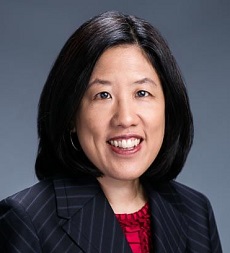Post-Acute, At-Home Care Saves Next Gen ACO Atrius Health $19.9M
Next Generation ACO Atrius Health also returned $15 million back to the organization by selecting the right post-acute care and delivering at-home care.

Source: Getty Images
- “You can't emphasize enough the right setting and the right care,” stressed Peggy Chou, MD, the Senior Medical Director of Performance Excellence of Atrius Health in Massachusetts.
Atrius Health is a non-profit system of 32 medical practices with more than 825 physicians. The organization is also a Next Generation accountable care organization (ACO) that saved Medicare $19.9 million in its first performance year and returned $15 million back to the organization.
The Next Generation ACO also saw clinical success. The ACO scored above the mean on 20 of 29 measures, including diabetes management, screening for future falls risk, ischemic vascular disease and the use of aspirin or other antithrombotics, pneumonia vaccination status for older adults and preventive care, and screening for clinical depression and follow-up plans.

Chou explained that Atrius, one of the original 32 Pioneer ACOs, had a successful first year in the Next Generation program because of the organization’s commitment to delivering the right care in the right setting.
“It’s not about saving money,” she recently told RevCycleIntelligence.com. “It's about providing the right care and the best care for the patient.”
READ MORE: For Ongoing ACO Shared Savings, Look Outside Inpatient, Primary Care
And for Medicare patients, managing the medical expense around hospitalizations and post-acute care was key to providing optimal care.
Hospitalizations are one of the costliest healthcare services patients can receive. Yet patients ages 65 years or older have the highest rate of inpatient stays, with the rate well above 26,400 per 100,000 population every year. As a result, the share of stays covered by Medicare increased 43 percent since 2000, the Healthcare Cost and Utilization Project (HCUP) reports.
While the hospitalization rate among Medicare-eligible patients is rising, many of these patients will end up back in a hospital bed within 30 days.
Hospital readmissions are extremely costly for hospitals. Patients readmitted to the hospital within 30 days of discharge cost hospitals $41.3 billion. And Medicare has the largest share of total readmissions and associated costs, HCUP adds.
Gaining control over the inpatient stay and where patients go after were top priorities for Atrius, which was taking on two-sided financial risk for its Medicare patients attributed to its Next Generation ACO.
READ MORE: How Next Generation ACOs Built a Foundation for Success
“In 2017, we built upon the work that we have done with managing our hospital costs and our transitions of care,” Chou stated. “One of our strategies was around transitions of care to make sure that patients were going to the right skilled nursing facility if they needed post-acute care.”
The care delivered at skilled nursing facilities can significantly impact an ACO’s financial and clinical performance.
ACOs are responsible for the medical expenses and outcomes of patients even after they leave the hospital. But skilled nursing facility performance can dramatically differ by organization. For example, top-performing skilled nursing facilities have an average Medicare length-of-stay of fewer than 24 days, while low-performing facilities average over 34 days.
Every day added to a patient’s skilled nursing facility stay can drastically increase the medical expense attributed to the ACO. Patient outcomes may also worsen if care delivered at the skilled nursing facility is not up to the ACO’s standards.
A couple years ago, Atrius recognized that transitions of care and post-acute care are vital to improving overall outcomes for patients. The organization developed a preferred skilled nursing facility network to ensure patients who needed skilled nursing care post-discharge went to a high-quality facility.
READ MORE: Value-Based Experience, Robust EHR Use Key Factors to ACO Success
The health system also embeds Atrius providers in some of its preferred skilled nursing facilities. The embedded provider helps to execute the ACO’s protocols onsite in order to minimize length of stay and improve care transitions.
Through its preferred skilled nursing facility network, Atrius has observed shorter lengths of stay and lower hospital readmissions rates, both metrics that typically result in lower care costs and improved patient outcomes under the Next Generation ACO model.
While improved post-acute care improved hospital costs and outcomes, the ultimate goal of the preferred skilled nursing facility network and smoother transitions of care was to get patients home sooner.
Caring for patients in the home leads to Next Gen ACO savings
Patients and their providers prefer at-home care, Chou explained. Getting patients to safely and effectively manage their conditions in everyday life and avoid costly emergency department (ED) visits are goals at Atrius Health.
While hospital admissions are the foundation of a typical hospital’s bottom line, two-sided risk ACOs like Atrius aim to keep patients out of the acute care setting to maximize revenue. Under the Next Generation model, Medicare Shared Savings Program (MSSP), and other public and private ACO initiatives, ACOs can share in the savings if their total care costs are below a financial benchmark and the organizations can earn bonuses for their quality performance.
Shifting more acute services into the patient’s home is crucial to sharing in savings and improving performance, Atrius found.
“We know that when a Medicare patient who has some chronic illnesses ends up in the emergency room, most of the time that person will get admitted even though we might have managed that same situation differently,” she said.
Through its Care in Place program, the ACO sends home health nurses from its subsidiary VNA Care to the homes of high-risk patients. Using a data warehouse and sophisticated predictive analytics models, providers identify patients who have an elevated risk of hospitalization. From there, Atrius and VNA Care contact them to proactively send a nurse to their home.
“The Care in Place program really took off in 2017,” Chou highlighted. “Under the program, when a patient has an acute issue, we're able to send out a visiting nurse to assess that patient in their home to make a determination of whether there are ways we can prevent that person from going to the emergency room and, ultimately getting admitted.”
“The nurse is very experienced,” she continued. “She does her assessment and she's able to speak to a medical control officer who is a geriatric-trained nurse practitioner or physician. Then, they make the decision about what should be done. It's an example of how we're continually trying to innovate what we do to provide the right care and make sure that patients are getting cared for in the best possible setting.”
The Care in Place program has realized significant financial and clinical benefits for Atrius since its inception in 2016. The program has saved $1.9 million and helped over one-third of program participants to avoid an emergency department visit.
Chou plans to leverage the success of the at-home care program in 2019 to build on the Next Generation ACO’s performance.
“We know through our analytics that there are opportunities with some patients who may have gone to the emergency room that probably should have been part of Care in Place,” she said. “We're working on that.”
The ACO also plans to work with CMS to encourage the federal agency to support the shift of hospital care into the home, Chou added.
“There are some regulations and challenges around getting care in the home, but we are ready when they're ready to think of things like expanding telehealth,” she stated.
